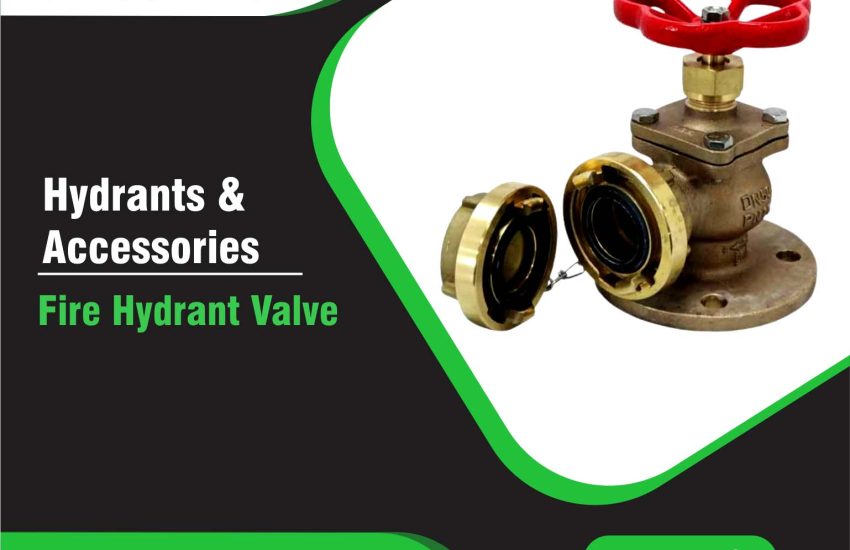Fire Hydrant Landing Valve is an essential component in fire protection systems, designed to provide an easy and reliable water supply for firefighting operations. It connects the fire hydrant system to the water supply and allows firefighters to quickly access water during emergencies. In this article, we will explore the key specifications, features, and importance of fire hydrant landing valves while optimizing the content with detailed keywords for SEO.
What is a Fire Hydrant Landing Valve?
A fire hydrant landing valve is a type of valve that is typically installed at strategic locations within a fire hydrant system. It serves as the main control point for regulating water flow from the fire hydrant to the firefighting equipment. Firefighters use landing valves to connect hoses and ensure a continuous and controlled water supply during firefighting efforts.
Key Specifications of Fire Hydrant Landing Valve
The specifications of fire hydrant landing valves determine their functionality, efficiency, and suitability for various fire protection systems. Below are the key specifications to consider when choosing a landing valve:
1. Material Construction
- Brass, Bronze, and Stainless Steel: These durable materials are commonly used in fire hydrant landing valves due to their corrosion resistance and long-lasting performance.
- Epoxy Coating: To enhance protection against corrosion and wear, many landing valves come with an epoxy coating, especially for outdoor installations.
2. Valve Type
- Gate Valve: The gate valve is a common type used in fire hydrant landing valves. It controls the water flow by either fully opening or closing the valve.
- Ball Valve: Ball valves are used for quick and smooth operation, allowing for fast adjustments during emergencies.
- Butterfly Valve: These valves offer compact design and efficient water flow control, especially in larger fire protection systems.
3. Size and Diameter
- Size: Fire hydrant landing valves are available in various sizes, typically ranging from 2 inches to 8 inches in diameter, depending on the water supply needs.
- Pressure Rating: The pressure rating of landing valves generally varies from 150 psi to 300 psi, which ensures that the valve can handle the pressure required for firefighting operations.
4. Flow Rate
- The flow rate of a fire hydrant landing valve depends on its size and pressure rating, with typical ranges from 500 GPM to 1500 GPM. A higher flow rate ensures that enough water is supplied to extinguish fires effectively.
5. Operating Mechanism
- Manual Operation: Fire hydrant landing valves are typically operated manually, allowing firefighters to turn a handle or wheel to open or close the valve.
- Automatic Operation: Some advanced models feature automatic activation when pressure is applied, enabling faster response times in emergencies.
6. Thread Connections
- Fire hydrant landing valves commonly feature NPT (National Pipe Thread) or BSP (British Standard Pipe) connections, ensuring compatibility with firefighting hoses and equipment.
7. Pressure Relief
- Pressure Relief Features: Some landing valves include pressure relief mechanisms to prevent the system from experiencing excessive pressure, which helps protect the entire fire protection system.
Features of Fire Hydrant Landing Valve
Fire hydrant landing valves come with several key features that enhance their effectiveness in fire protection systems:
- Corrosion Resistance: Built with high-quality materials, these valves resist rust and corrosion, ensuring they remain reliable even in harsh outdoor environments.
- Ease of Use: Most valves are designed with ergonomic handles, making them easy to operate, even under high-pressure conditions.
- Weatherproof: Fire hydrant landing valves are designed to withstand extreme weather, making them suitable for both indoor and outdoor fire safety applications.
- Flow Control: These valves allow firefighters to control the flow of water, which is essential for efficiently fighting fires.
Importance of Fire Hydrant Landing Valve in Fire Safety
Fire hydrant landing valves are crucial in ensuring that firefighters can access water when needed. Here are some key reasons why these valves are important in fire safety systems:
1. Reliable Water Supply
- Fire hydrant landing valves ensure a constant and reliable water supply, which is critical for effective firefighting.
2. Efficient Water Flow Control
- These valves give firefighters control over the water flow, allowing them to adjust the pressure to suit the size and intensity of the fire.
3. Quick Access to Water
- Fire hydrant landing valves provide quick access to water, enabling firefighters to act fast and reduce the spread of the fire.
4. Protection of Fire Safety Equipment
- By controlling water pressure, landing valves help protect firefighting equipment from damage caused by excessive water pressure.
5. Durability
- Constructed from high-quality materials, fire hydrant landing valves are built to withstand wear and tear, providing long-term reliability.
Maintenance and Testing of Fire Hydrant Landing Valve
Proper maintenance is essential to ensure the effective operation of fire hydrant landing valves. Regular inspection and testing will guarantee that the valves function as required in emergencies. Key maintenance practices include:
- Annual Inspections: Inspect the valve for wear, corrosion, and signs of damage to ensure it is functioning correctly.
- Lubrication: Lubricate the valve’s moving parts to maintain smooth operation and prevent rust buildup.
- Pressure Testing: Conduct regular pressure tests to ensure the valve can handle the necessary pressure levels during firefighting operations.
- Cleaning: Clean the valve and connections to remove dirt and debris, ensuring that the valve operates efficiently when needed.
Conclusion
Fire hydrant landing valves are essential components in fire protection systems. They provide a reliable water supply, control water flow, and ensure that firefighters can respond quickly during emergencies. With durable construction and effective water flow management, fire hydrant landing valves help maintain the efficiency and reliability of firefighting operations. Regular maintenance ensures that these valves continue to function properly and protect people and property. By investing in high-quality fire hydrant landing valves, businesses, municipalities, and industrial facilities can significantly enhance their fire safety measures.


